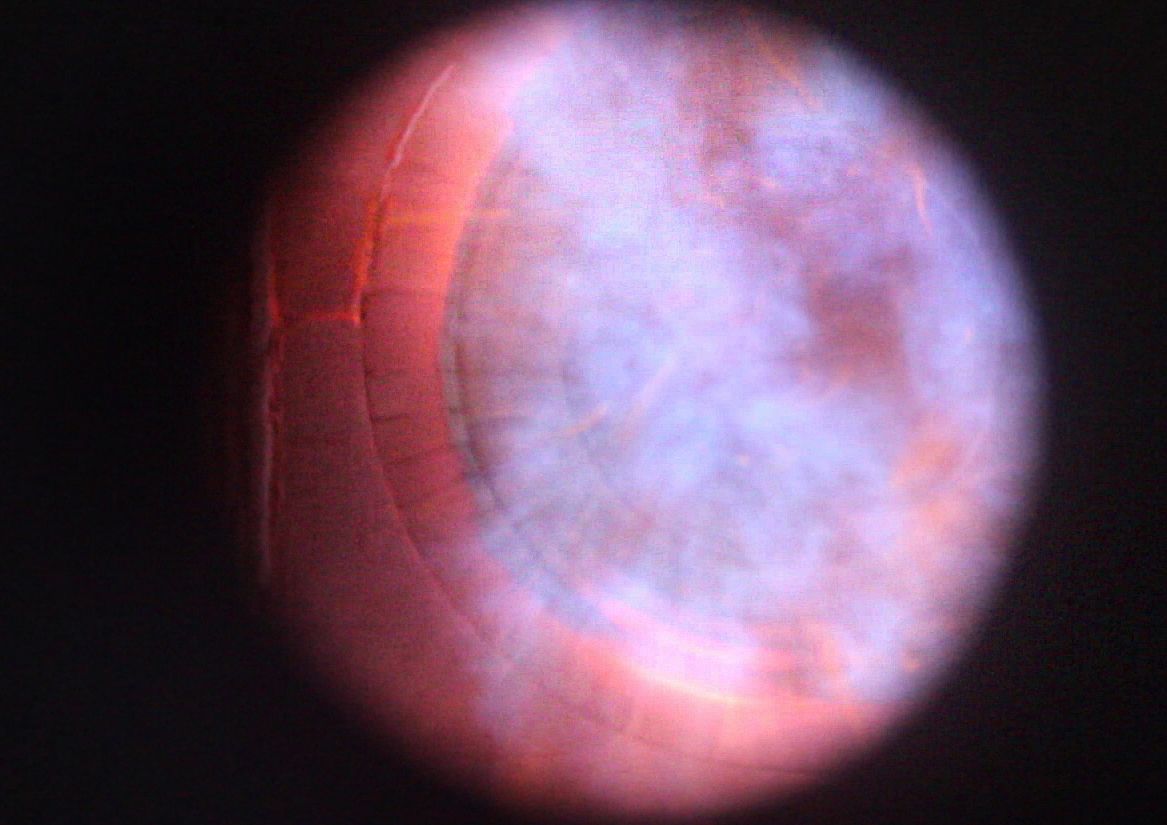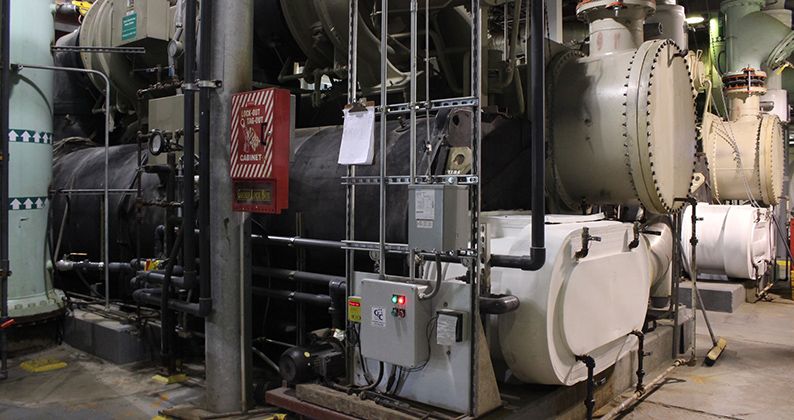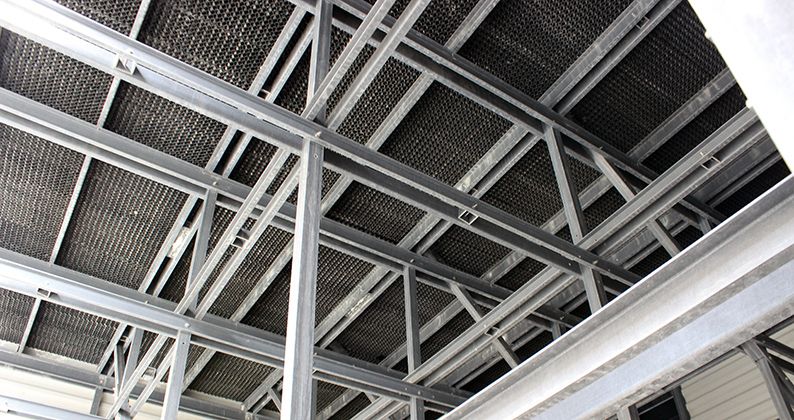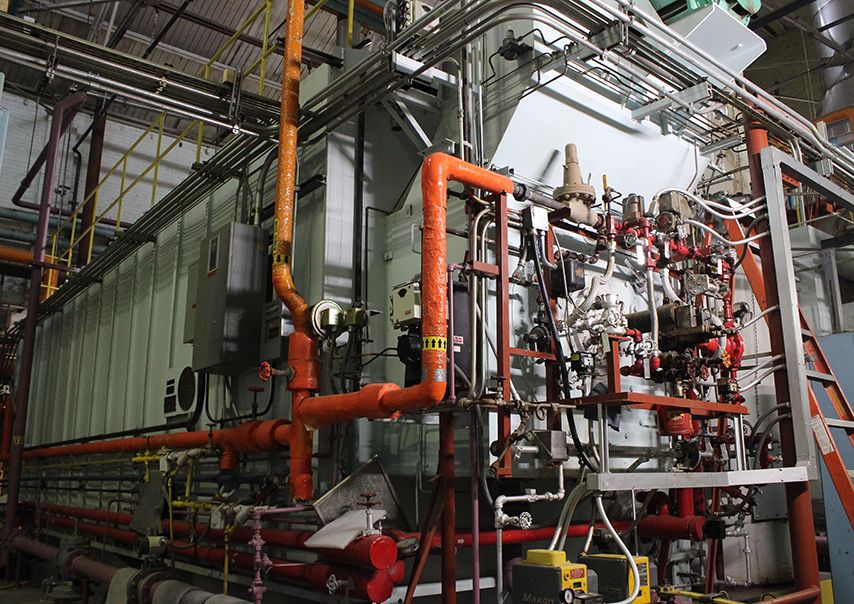
High-pressure steam and chilled water are essential for campus building air temperature regulation. Their applications also include water heating, food warming and aiding in more complex research loads such as cooling equipment in laser research.
Heating Process
In our boilers, steam is produced at very high pressure with more heat content, very much like a residential pressure cooker. Under the pressure of ongoing steam generation, steam fills the void in the miles of underground supply mains leading to buildings across campus without the need of being pumped. In these boilers, a delicate mixture of air and fuel is needed to achieve the optimum flame combustion for heating up water.
As steam releases its heat to the buildings, it condenses back into water. This condensate is collected and pumped back, sometimes with the help of gravity, to the boiler plant.
Because some steam is naturally lost and no large system can be perfectly efficient, water is routinely treated and added to the boiler water to make up for losses.

Cooling Process
The cooling principle behind a large scale utility plant that is providing comfort cooling to the entire campus is very much similar to how a household air conditioner operates.
In a residential environment, an air-conditioner uses Freon to absorb heat from the house. Once the liquid Freon absorbs heat, it turns into a gas that is moved to the condenser unit outside the house. The condenser then expels the heat and condenses the Freon gas back into its liquid form and the cycle continues.
In a utility plant, water is the medium for absorbing heat. Water is sent out of the plant at 40° Fahrenheit and absorbs the heat from the buildings. The returned 50° Fahrenheit water is then pumped through the plant's large water chillers. In the evaporator section of the chiller, water is pumped through thousands of copper tubes submerged in refrigerant. The refrigerant boils as it absorbs the heat from the water, chilling the water back to 40°F before it is sent out again to the campus.


The heat that is absorbed by the refrigerant is then passed on to another water loop that goes to the cooling tower outside of the utility plant. The cooling towers are tall open-air structures with giant suction fans at the top. The hot water travels to the top of the tower and is then sprayed downwards into a multiple layers of honeycomb mesh that helps break apart the water droplets. The suction fans then draws in cool air from the bottom of the tower to cool down the water and the heat is then expelled from the top of the tower.
